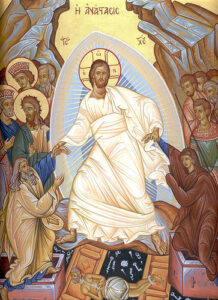 You may remember a geography lesson from elementary school in which we learned that the southernmost point of Africa is a point which, for centuries, has experienced tremendous storms. For many years, no one knew what lay beyond that cape, for no ship attempting to round that point had ever returned to tell the tale. Among the ancients it was known as the “Cape of Storms,” and for good reason.
You may remember a geography lesson from elementary school in which we learned that the southernmost point of Africa is a point which, for centuries, has experienced tremendous storms. For many years, no one knew what lay beyond that cape, for no ship attempting to round that point had ever returned to tell the tale. Among the ancients it was known as the “Cape of Storms,” and for good reason.
But then a Portuguese explorer in the sixteenth century, Vasco De Gama, successfully sailed East around that very point and found, beyond the wild raging storms, a great calm sea, and beyond that, the shores of India. The name of the cape was changed from the Cape of Storms to the Cape of Good Hope.
Until Jesus Christ rose from the dead, death had been the “cape of storms” on which all hopes of life beyond death had been wrecked. No one knew what lay beyond that point until, on Easter morning, Jesus arose. The ancient visions of Isaiah and other prophets became the victory of Jesus over our last great enemy.
Thankfully, like at least one sixteenth-century explorer, we can “see beyond” death to the hope of Heaven and eternal life with God. More than that, we dare to believe that we shall experience in our own lives exactly what the Son of God experienced in His, for the Risen Christ still says to us, “Because I live, you shall live also.” This is the heart of our faith.
***
Happy Easter Octave! Does this make you wonder what an Easter Octave is? The term “octave” derives from the Latin word for “eighth” (in music, the eighth note). Octave has two meanings in Catholic life: the eighth day after a feast, or the whole period of those eight days. The Catholic Easter Octave is thus the eight days that begin with Easter Sunday and continue through the following Sunday.
Initially, we had the weekly celebration of Christ’s Resurrection every “eighth day,” that is, every Sunday. The practice of other liturgical Octaves was first introduced in the fourth century. These were, for the most part, one-time events, but eventually certain annual liturgical feasts came to be dignified with an Octave (Easter, Pentecost, and Epiphany). In the following centuries, Octaves were multiplied: Christmas, the dedication of churches, and many saints feasts, for examples. In more recent times, Church calendar reforms have removed all Octaves except Christmas and the one we have now begun – Easter.
For more on what an Octave is and how to celebrate it: https://aleteia.org/2019/04/24/what-is-the-octave-of-easter/

